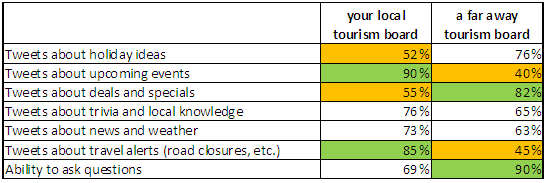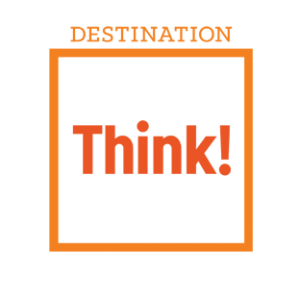The Archives
-
Management, social media, Think! Social Media
Research: Social Media Boutiques are Winning Deals Over Traditional Digital Agencies
Interesting post from Jeremiah Owyang today about his research findings that Social Media Boutiques are Winning Deals Over Traditional Digital Agencies. And although I think the line between traditional, digital and social media agencies is a lot more blurred than the post suggests, it’s an interesting read.
Jeremiah’s research concludes that especially the clients who are more advanced in social media leave traditional agencies for boutique agencies for the following reasons:
- Offer a specialized skillset in new media and social business that traditional agencies may not offer
- Often offer change management within the corporations –traditional agencies have a reputation for layering social media on top of existing campaigns.
- Rather than be ‘campaign’ focused, instead are more long term focused such as building a community with customers for the long term.
- Are ready to roll up sleeves to assist with deeper customer engagement –not just deploy traditional advertising (one of the top spends in social business)
- Are more agile within smaller teams and can quickly maneuver as the technology space changes over time.
- Fundamentally are geared to measure differently around engagement, and what it means –not just top line and bottom line measurements
I would add to that list that ‘traditional’ agencies often lack the culture necessary to really make social media (or digital for that matter) work.
<plug>
And at Think! Social Media we can add a specialized focus on the travel, tourism and hospitality industry as well. This industry isn’t easy to figure out and you need to understand the specifics in order to deliver real value to your clients.
</plug>
Jeremiah also identifies some weaknesses boutique agencies can have:
Despite their strengths, Social Media Boutiques have weakenesses. They are often unable to scale as engagement is difficult to roll out to all product units and around the globe, are quickly finding that traditional agencies are catching up by training staff (see how Edelman has an internal black belt education program) and often lack the ability to achieve an integrated marketing approach.At Think! we’re already rapidly expanding to offer full digital services with integrated social media. We’re achieving this though great partnerships (including ‘traditional’ agencies) and by acquiring new talent, here in Vancouver, but also around the world.
It’s safe to say that 2011 will be very exciting.
-
Internet, Marketing, Travel & Tourism
The Role of DMO and CVB Websites – Start with your website user
09.07.09 | Permalink | 2 CommentsThe role of our website is a favourite topic among senior management at Tourism BC and has been for a long time. PhoCusWright’s Destination Marketing: Understanding the Role and Inpact on Destination Marketers flared up another round last summer. I’ll spare you those details but here are some of my thoughts.
PhoCusWright rightfully notes that almost every DMO is different they way they’re structured, funded and organized but that key issues and challenges are very similar. I’ve been talking to my peers around the world for 10 years now and that’s definely true.And it’s becoming more challenging all the time. Online innovation continues are a rapid pace while a DMO website is now at the heart of all marketing activities. My perspective a user centered one. If you don’t meet your website user’s goals, there’s no hope you’ll ever meet any of your organizational or stakeholder objectives, because your visitors won’t stick around.
One place to start is to figure out where a person’s place is in the planning (or purchase) cycle.Find out if somebody:
- knows about the destination but is not considering a trip yet
- is considering a trip but doesn’t have concrete plans yet
- has decided to visit but hasn’t booked yet
- has booked and it filling in the details
- is in the middle of the trip, continuing planning
The answer to the question posed above could radically change the approach you should take. If most people are in the first group, they’re looking for a reason to visit. They need to be inspired. Big imagery, videos that connect on an emotional level and experiential stories work really well in this phase. Most DMO websites serve consumers in this phase very well.
But if somebody is in the third group, the role of the website is not to lose the sale. They’re already inspired and motivated. Most DMO websites don’t do very well here. When somebody visits a DMO website in this phase, it probably means there’s just a few nagging questions and they need answers. Details. How long does it take to drive there? How expensive is everything?Is the museum open on Mondays? Is there enough to do for the whole family?
Forget the emotional video and big images. The website can look like Craigslist. They just want detailed information (they could also be looking for a deal by the way, but that’s another poll to run).
PhoCusWright has polled consumers and their report includes valuable information about where consumers say they visit DMO websites in the process. We’ve polled our website visitors about this for a while now and our numbers are a bit different from PhoCusWright’s. This leads me to believe that it might vary based on the destination.
It’s super easy to find out where your visitors are in the process. Poll them. Find out. And use it internally as you discuss the role of your website. And get the PhoCusWight report, it’s worth the money.
-
Uncategorized
Twitter for Travel and Tourism: Wrapping my head around it
01.10.09 | Permalink | 24 CommentsI’ve been trying to wrap my head around what the opportunity is exactly for a Destination Marketing Organization like Tourism BC. Here’s where I’m at. I welcome your input.
Twitter is social, so it’s up to an individual to choose to follow somebody. To a bit of understanding about what would motivate somebody to follow a DMO, I posted a short survey on Twitter. I didn’t get near enough responses to give it statistically valid results (n<100) but its something (feel free to fill it out and re-tweet).

My hypothesis that there’s a difference between what people expect from a local or a far away tourism board seems to be true. Locals are interested in current information while long haul visitors look for ideas, deals and help in trip planning. Makes sense, people’s needs depend on the level of knowledge about a destination.
My open question “Anything else you want to share about what a Tourist Board can do for you via Twitter?” resulted in some interesting insight (appended in the rest of by entry in italics below). They’re in line with some ideas I have:
Twitter as a customer service centre
how about a “virtual” Visitor Information Centre/counsellor where visitors could ask questions about what to do, etc.
Comcast’s Frank Eliason is universally hailed for his ComcastCares account where Comcast customers can ask questions or get help with service problems. Many DMO’s already sun visitor centres and/or call centres. Twitter is another channel for communication.
I wonder how this would scale though as Twitter grows. Creating a network of Twitterers in a destination, each as an expert for a particular area or sector is one option. It doesn’t have to be a DMO representative answering the question, there are plenty of local experts out there. Building the network and distributing questions is the role of the DMO.
Pro-actively sharing information
insider info about the place like favourite bar for a martini, celebrities visiting, bits of history
Sends you on a “5 second holiday” each day with breathtaking photos.
This falls more into the broadcasting category and that means you need to be careful because it’s easy for people to perceive your message as spam and unfollow you as a result. But as the survey above show, there’s appetite for this information. So how to go about it?
Twitter is about information sharing. But quality, quantity, frequency and communication style are important. I’ve been active on Twitter for almost two year and here are my observations.
Add links. Pointing to quality information is key to Twitter. Don’t just link to your own website. Be diverse. By using a URL shorterner with reporting features like budURL or Cl.igs, you can measure the quality of your tweets by the number of clicks it receives.
Frequency. Don’t post one tweet after another but space your informational tweets. You can use a tool like Tweetlater to schedule tweets. I use it for my ‘Good Morning’ tweets to cool BC photos. People are creatures of habit and people will look remember similar pieces of information at a regular time of the day.
Communication style. Just like all social media, the communication style needs to be conversational and authentic. No marketing talk; this message is from a person on behalf of a company. Companies can’t talk.
The quality of information needs to be good. This is very subjective of course, and learning through trail and error is probably your best bet. Measuring re-tweets (what’s retweet) is another good way of measuring the quality of your information.
Find a personal connection
Ask me questions and engage me.
An important realizations came to me last week when Meg from Finger Lake sent me the following message:@wilhelmus we have a winery named after you in the Finger Lakes! http://w ww.wilhelmusestate…. 🙂Twitter is about personal communication. Broadcasting general information is hit an miss for people. But if you make a personal connection, either through a gimmick (like my name) or an interest, the communication becomes a lot more meaningful. Again, scaling is tough. We receive millions of visitors to our website. There’s no way we can develop a personal relationship with every person on Twitter. But our network of tourism partners certainly can. The operator ultimately delivers the experience after all.
Use the Twitter community
Take suggestions – ask us what the best cafe is in Revelstoke or great family camping etc.
Twitter is a community. People build their their network by following and being followed by other people. As a DMO, you need to work just as hard at your network as other people. When you create a thriving network, the network is the marketer, not the DMO. As a DMO, you can activate this by engaging the network as suggested above. Your network needs to include a diversity of ‘local experts’ that you can use to assist and connect with people.
This is where Twitter excels. It’s how David Armano raised thousands of dollars for a friend in need. It’s how Twitter is rapidly becoming a channel for live witness news.
Conclusion
Twitter can be a valuable tool for DMO’s by providing information and support for travelers and potential travelers. It’s important to understand Twitter is a social channel and not a broadcast channel. The personal and one-on-one communication style of Twitter is hard to scale. That’s why it’s important to build a network of people from your industry and past travelers and passionate residents you can activate.
Build your network and start engaging people. Use re-tweets to find the right person to assist and inform potential travelers. You can also use search and alerts to find people with questions that relate to your destination or related tourism experiences.

